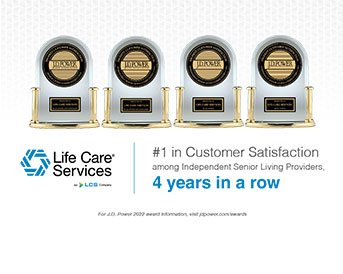Staying active is vital at any age, but it’s especially crucial for seniors. Regular exercise provides many health benefits, such as improved cardiovascular health, enhanced mental well-being, and helping seniors live a more independent lifestyle. There is growing evidence to show that it may slow the progression of dementia. In this blog post, we will explore the best exercises for seniors and provide tips on how to get started, stay motivated, and enjoy the numerous benefits of an active lifestyle.
Factors to Consider Before Starting an Exercise Routine
Before diving into a new exercise routine, taking a few precautions is essential. Speak with your doctor or physical therapist to determine which exercises suit your needs and health conditions. Pay attention to any discomfort or pain during training and adjust as needed. Begin with shorter durations and lower intensity, gradually increasing as your fitness level improves. To maintain long-term commitment, we recommend choosing exercises you’ll enjoy, and don’t be afraid to mix things up and try something new.
Benefits of Exercise for Seniors
Regular exercise is about as close to the fountain of youth as possible. Our top eight exercises have multiple benefits for seniors. The best news is that it is never too late to start. Seniors in their 60s, 70s, and even 90s have started exercise programs with fantastic results. No matter which exercises you choose, starting slow and easy is important. You’ll see the following benefits frequently throughout this blog:
- Improved cardiovascular health
- Better balance and coordination
- Increased bone density
- Reduced risk of falls
- Improved mental health
- Better sleep quality
- Stronger immune system
- Weight management
- Vibrant social connections
What Are the Types of Exercise?
If you haven’t seen the inside of a gym in a while, the terms weight-bearing, non-weight-bearing, and resistance exercises might be new to you.
- Weight-bearing exercises are those that bear weight on your frame. These types of exercises include walking, jogging, stair climbing, tennis, and dancing.
- Resistance exercises include all weight training or lifting weights.
- Non-weight-bearing exercises include yoga, Tai chi, Pilates, cycling, and swimming. These are very gentle on your joints.
A good workout program can include all these workout types.
Top Exercises for Seniors
Below we’ve compiled the best exercises for seniors with benefits and tips to get started.
Walking for Seniors
Walking is one of the easiest exercises for seniors. It needs no special equipment, and most people can get started by opening their front door and going for a walk! Walking is considered a low-impact exercise, meaning it is easier on your joints, unlike running, which can put more stress on joints.
Benefits of Walking
Walking can improve your cardiovascular health, build endurance, strengthen muscles, and help to reduce high blood pressure. It can also maintain your joint flexibility and improve coordination which helps to reduce falls. Even taking a casual stroll can help improve your mood.
Tips to Get Started
If it has been a while since you’ve put on your walking shoes, start with a short stroll around your community and gradually increase the distance and pace as you feel comfortable. To stay motivated, consider joining a walking group or exploring different walking trails. If your community allows pets, but you want to avoid taking on the full-time responsibility of a pet, offer to walk other residents’ pups. As you get more comfortable walking, pick up the pace and add a light hand or ankle weight.
If the weather is a concern, you can always walk indoors.
Tai Chi for Seniors
Tai chi, an ancient Chinese martial art, promotes balance, flexibility, and mindfulness and is considered by some to be a “moving meditation.” Tai chi classes are often found at community centers, senior centers, local parks, or senior residences. If your senior community doesn’t offer Tai chi, ask your events director to add it to their list of programs.
Benefits of Tai Chi
Beyond the benefits mentioned above, Tai chi has been known to promote deep breathing, improve lower body strength, help with arthritis pain, and improve posture. Tai chi has been practiced by people worldwide for hundreds of years.
Tips to Get Started
Tai chi classes are fun and bring together like-minded people looking to mix up their workout routines. It is generally best to find an established teacher to teach the moves, and it is recommended to wear comfortable flat shoes. Since Tai chi is a very gentle exercise, seniors can do it once weekly or daily. Start with beginner-level classes, progress at your own pace, and have fun.
Strength Training for Seniors
Strength training has enormous benefits for seniors, and it’s never too late to reap the benefits. It’s important to start slowly and follow all the safety rules.
Tips to Get Started
Resistance training can be done using weights, resistance bands, or bodyweight exercises. Body weight exercises can be a great place to start because you don’t need any equipment and you use your body as the weight. An example of using your body weight would be wall pushups or chair squats. Consult a professional to learn the proper form to prevent injuries.
Benefits of Strength Training
Building muscle strength is crucial for seniors to maintain independence. Strength training helps prevent osteoporosis and can aid in the growth of muscle. It can also help maintain a healthy weight, boost metabolism, and improve balance and coordination.
Dance & Aerobic Activity
Aerobic exercises can encompass various activities, including aerobics classes, rowing, elliptical trainers, dancing, and even gardening. Of all aerobic activities, dancing may be the most fun. Dance fitness can include Latin, salsa, line dancing, and even ballet, tailored for adults and seniors.
Benefits of Aerobics
Aerobic exercise, called cardio, helps get your heart rate up and pumps blood and oxygen to your muscles and body. Like most exercises for seniors, aerobic training can improve heart health, help manage your weight, boost your metabolism, and can be fun to do.
Tips to Get Started
Seek out low-impact aerobics classes for seniors or try SilverSneakers. Wear walking shoes or other well-cushioned shoes for exercising.
Cycling for Seniors
Ready to feel the wind in your hair and feel like a kid again? Hopping on a bicycle can take you on a delightful journey physically and mentally, allowing you to explore new paths and rekindle that youthful spirit within.
Benefits of Cycling
Cycling, on a stationary bike or outdoors, can improve cardiovascular health, strengthen leg muscles, boost the immune system, and enhance balance and coordination.
Tips to Get Started
Biking for seniors is a safe exercise to engage in, but there are some precautions you should take.
- If you last rode your bike a while ago, be sure to have it checked over at your local bike shop. Make sure it is in top shape before riding.
- Always wear protective gear, including a bike helmet.
- Start slowly. If you haven’t been on a bike lately, take a leisurely ride around the community, keeping to flat roads or gentle inclines.
- Ride on designated bike trails rather than roads and streets.
Additional cycling options for seniors include:
- Recumbent bikes
- Electric bikes
- Fat tire bikes
- Stationary cycling at your gym or fitness center
Swimming for Seniors
For water-loving seniors, swimming can be a highly beneficial activity. Seniors can do other activities in the pool too, including aqua jogging, walking, and water aerobics; there are even senior water polo leagues to join.
Benefits of Swimming
When swimming, up to 90% of a person’s body weight is supported by water, which means it is gentle on the joints and is an ideal choice for seniors with arthritis or joint pain. Swimming is considered a full-body workout, which is an excellent choice if you have a busy lifestyle and are looking for one activity that will hit all muscle groups.
Tips to Get Started
Join a local pool or aquatic center to participate in swimming or water aerobics classes designed specifically for seniors.
Yoga for Seniors
Yoga and other non-weight-bearing exercises like Pilates, Tai chi, and qigong offer the benefits of a flexible body and may help improve sleep quality.
Benefits of Yoga
Yoga is an excellent way for seniors to build strength and reduce stress. Yoga and other forms of stretching exercises are fantastic ways to improve flexibility. Greater flexibility in seniors can help reduce the risks of fractures and sprains. Keeping bodies limber through yoga improves posture and can aid in overall calmness and improved mental health.
Tips to Get Started
Look for senior-friendly yoga classes at local studios or community centers. Remember to use props and modifications to accommodate your unique abilities, and don’t over-stretch.
Chair Exercises for Seniors
A chair can adapt many standard exercises for those with limited mobility. Even cardio exercises can be done while sitting. Other exercises that can be adjusted include:
- Strength and weight training
- Yoga
- Full-body workouts
Benefits
Like standard exercises, chair-based routines can help improve strength and flexibility, pumping heart rate, and putting less strain on joints. Chair exercises can aid in improving posture and circulation too.
How to Get Started
Many recreation and fitness centers have chair-based exercise programs and routines or search for “chair routines” online. Chair exercises can be done in a sturdy, comfortable chair, or a wheelchair.
Tips for Staying Motivated
Exercising is the easy part. Staying motivated is the tricky part. Some helpful tricks to keep on track include:
- Set manageable milestones to keep yourself motivated.
- Celebrate your progress!
- Keep a journal or use an app to document your exercise routine and monitor improvements.
- Take a before, during, and after photo. This can motivate you to keep going.
- Enlist a friend or family member to join you in your fitness journey. Mutual support and accountability can go a long way.
- Join a club or fitness group to foster community and make exercise fun.
- Variety is the spice of life. Mix up your routines to prevent boredom and keep your body challenged.
The Importance of Rest and Recovery
Rest and recovery are crucial for your body’s health. Pay attention to signs of fatigue and allow yourself time to recover between workouts. Aim for 7-9 hours of sleep each night to support muscle recovery and overall well-being. Incorporate relaxation practices such as deep breathing, meditation, or gentle stretching to help your body recover and manage stress.
Exercise As the Fountain of Youth
Physical exercise remains one of the best ways to keep bodies healthy and delay and reverse negative signs of aging. While we may not have discovered the elusive fountain of youth, embracing a consistent exercise program can help you age gracefully and maintain vitality. So, lace up those sneakers or roll out the yoga mat, and let the joy of movement be your fountain of youth, adding a splash of health, happiness, and energy to your life!
Find Your Community Today
At Life Care Services, we prioritize a healthy lifestyle for seniors. As a trusted leader with over 130 communities across the U.S., we offer a variety of care support and living options. For seniors looking to maintain health and wellness, a majority of our senior communities provide nearly every healthy choice mentioned above. Join us today and discover the best place to thrive, stay active, and create lasting connections.


